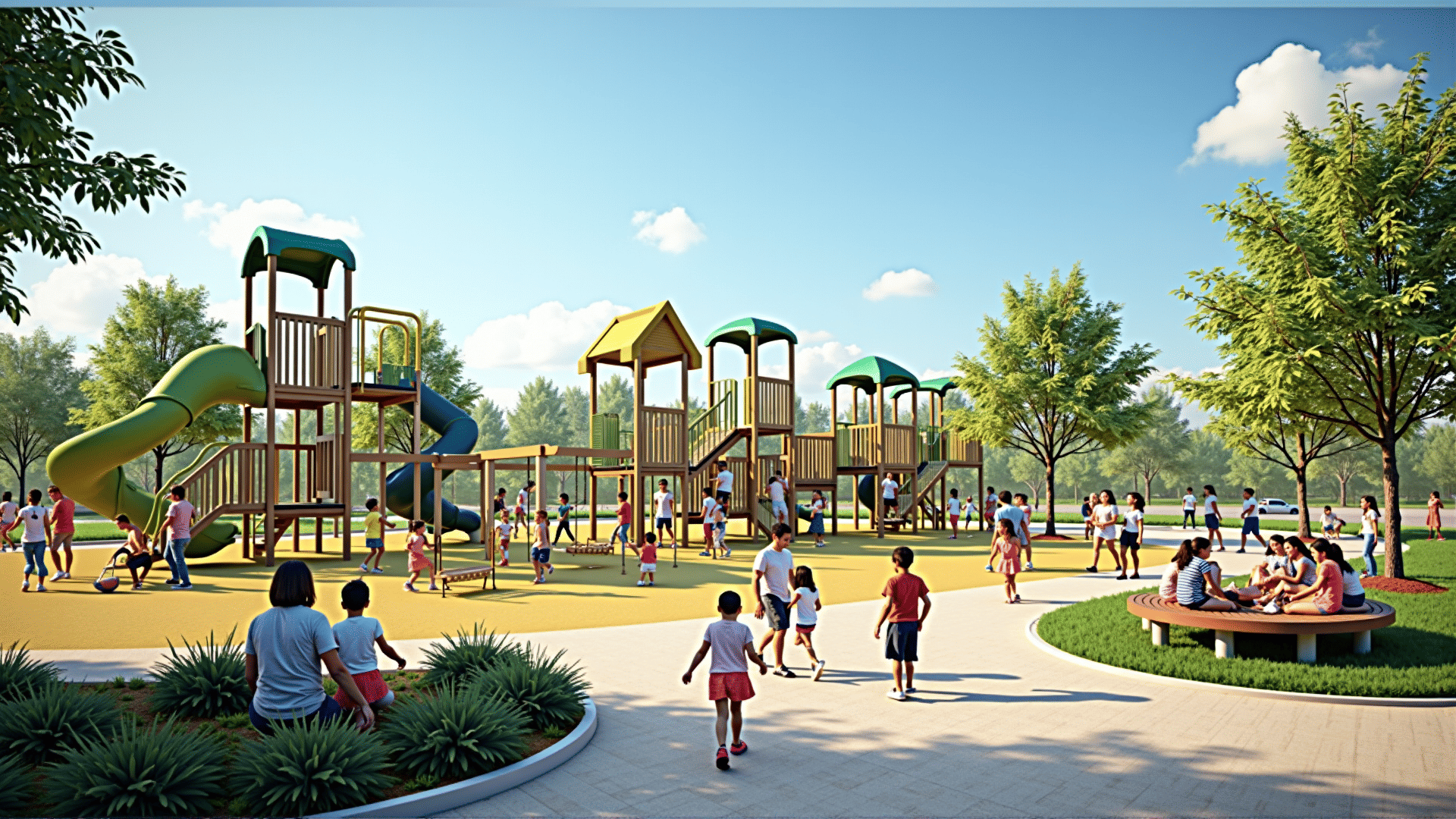In today's rapidly urbanizing world, the need for spaces that foster community engagement and social interaction is more critical than ever. Vibrant, inclusive play areas for all ages serve as hubs for social gatherings, promoting connectivity and building stronger communities. Innovative designs are at the forefront of this movement, transforming ordinary spaces into extraordinary places where everyone feels welcome and valued.
The concept of inclusive play goes beyond simply providing facilities for children; it encompasses creating environments where people of all ages, abilities, and backgrounds can come together. This approach recognizes the importance of multi-generational interaction and the benefits it brings to mental and physical well-being. Here are some of the innovative strategies employed in modern community play areas:
-
Universal Design Principles: Inclusive playgrounds are built with universal design principles in mind, ensuring accessibility for everyone, including those with physical or cognitive disabilities. Ramps, wide pathways, and sensory elements play a vital role in making these spaces welcoming. The inclusion of braille panels, tactile paths, and auditory cues ensures that children with visual impairments or other sensory needs can enjoy the space independently.
-
Intergenerational Areas: Modern playgrounds are no longer just for children. Intergenerational play zones include exercise stations for adults, areas for grandparents to relax, and games that encourage all ages to participate. Benches and shaded seating areas further facilitate social interactions among different age groups, enhancing the sense of community.
-
Nature-Inspired Spaces: Incorporating natural elements such as logs, rocks, plants, and water features into play areas not only creates a more engaging environment but also fosters a connection to the natural world. These designs Encourage imaginative play and offer educational opportunities about environmental stewardship.
-
Cultural Reflectivity: Community play areas that reflect the cultural diversity of their neighborhoods help in fostering inclusivity. Incorporating art, symbols, or structures that represent local heritage can instill pride and ownership among residents. These elements often become conversation starters, bridging cultural gaps and fostering understanding among community members.
-
Flexible, Modular Designs: To meet the evolving needs of a community, playgrounds are now designed with flexibility in mind. Modular structures that can be reconfigured or expanded allow communities to adapt and grow over time. This adaptability ensures that the space remains relevant and engaging for future generations.
-
Technology Integration: With technology playing a significant role in the lives of individuals, its integration into play areas offers new ways to engage people of all ages. Interactive digital installations, augmented reality experiences, and smart benches with charging ports cater to tech-savvy individuals while providing unique educational experiences.
-
Community Involvement: The most successful community play areas are those that have been developed in close collaboration with the communities they serve. Engaging local residents in the planning and design process ensures that the resulting space meets the unique needs and desires of the community. This participatory approach encourages a sense of ownership and pride, leading to better maintenance and care of the area.
In conclusion, innovative designs that foster community interaction are essential in creating vibrant, inclusive play areas. By integrating universal design principles, promoting intergenerational play, and embracing cultural diversity, these spaces have the potential to transform neighborhoods into thriving hubs of activity and engagement. As cities continue to grow, prioritizing community-oriented spaces will be key to nurturing inclusive, connected, and harmonious communities for all.
